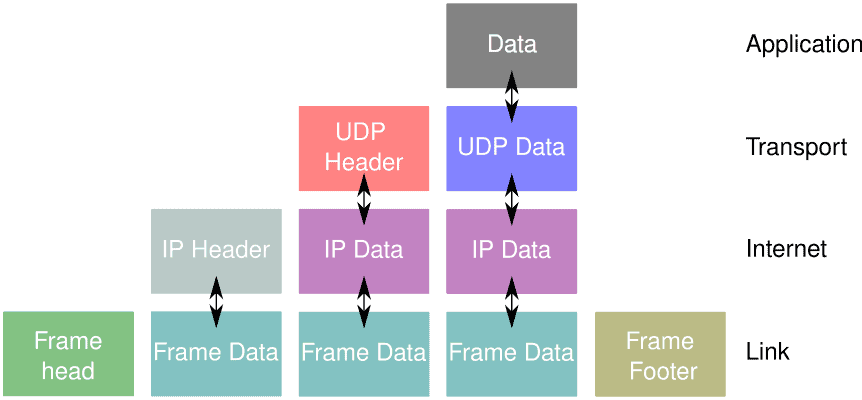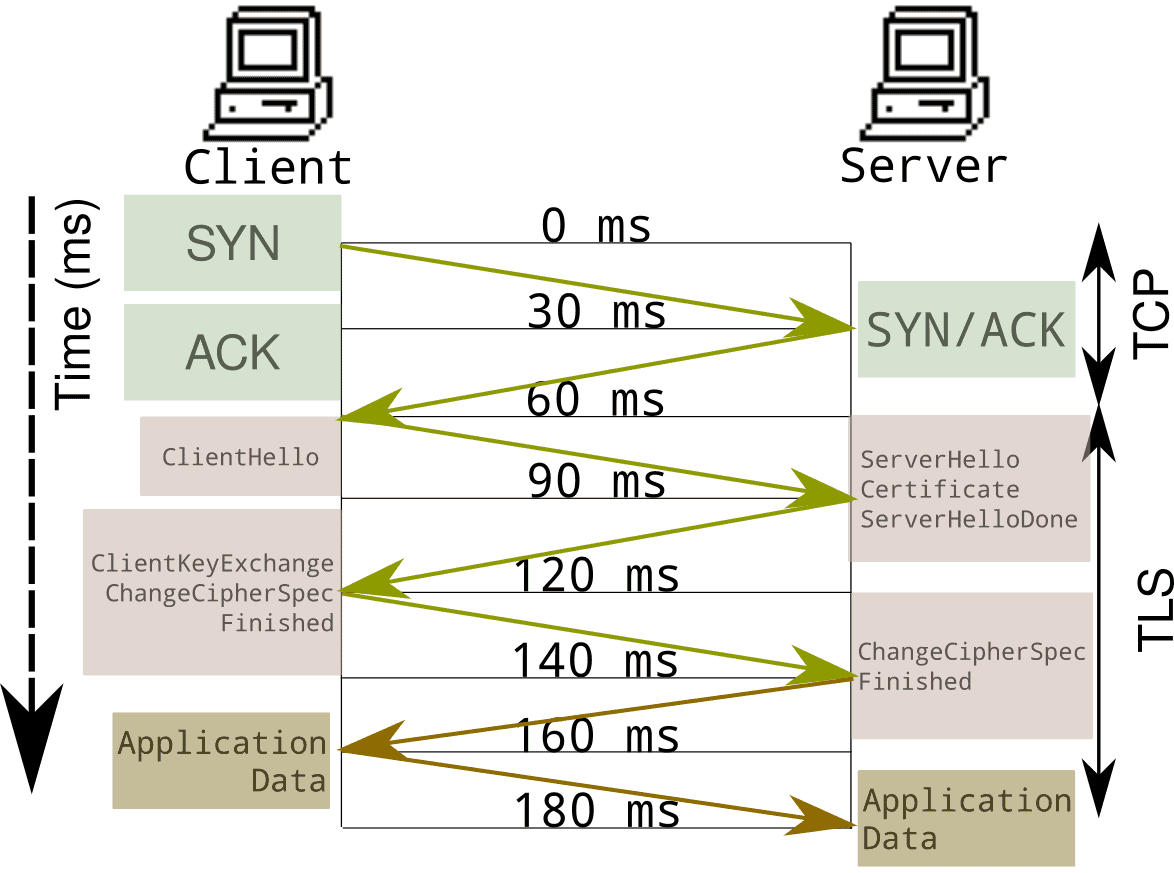1. 引言
现代计算机之间的通信依赖于多个协议层,以确保数据能够高效、可靠地传输。最常用的模型是 TCP/IP 协议族,它将网络通信划分为多个层级:

本文将聚焦于 TCP/IP 架构中的传输层,重点介绍两个加密通信协议:TLS(传输层安全协议)与 DTLS(数据报传输层安全协议),并比较它们之间的异同。
2. 传输层概述
TCP/IP 协议族中传输层最常见的两个协议是 TCP 和 UDP。
- ✅ TCP 是面向连接的协议,常用于 HTTPS、SMTP、POP、FTP 等需要可靠传输的场景。
- ✅ UDP 是无连接协议,适用于对延迟敏感的应用,如视频流、在线游戏、广播等。
尽管 TCP 和 UDP 各有优势,但它们本身不加密,容易受到窃听、伪造和篡改。因此,TLS 和 DTLS 被设计出来,为通信提供加密保障。
📌 可以简单理解为:TLS 是 TCP 上的安全协议,DTLS 是 UDP 上的安全协议。
3. TLS(Transport Layer Security)
在 TLS 出现之前,SSL(Secure Sockets Layer)曾广泛用于网站身份认证与加密通信。TLS 是 SSL 的继任者,安全性更高,功能更完善。
TLS 的核心在于通过握手协议建立加密通道,并通过证书机制验证身份。
3.1 TLS 握手流程
TLS 握手通常发生在 TCP 三次握手之后,流程如下:
- 客户端发送
ClientHello,包含支持的 TLS 版本、加密套件等; - 服务端响应
ServerHello,选择一个加密套件,并发送自己的证书; - 客户端验证证书,协商密钥(如使用 Diffie-Hellman 或 RSA);
- 双方交换
Finished消息,确认握手完成; - 加密通信开始。
⚠️ 注意:TLS 握手需要多个往返(round trip),可能引入几十毫秒的延迟。

4. DTLS(Datagram Transport Layer Security)
DTLS 是基于 TLS 设计的,但针对 UDP 环境进行了优化,适用于对实时性要求高的场景。
与 TLS 相比,DTLS 的主要特点包括:
- ✅ 支持数据报(datagram)通信;
- ✅ 允许丢包、乱序、重复;
- ✅ 不保证数据完整性或顺序;
- ✅ 适用于 WebRTC、VoIP、游戏等实时通信。
📌 DTLS 的握手流程与 TLS 类似,但增加了对丢包和乱序的容忍机制。
5. 主要区别对比
5.1 显式记录(Explicit Records)
- ✅ TLS:将数据流切分为多个片段,对应用层透明;
- ❌ DTLS:每个记录必须完整发送,否则丢弃,应用层需自行管理。
5.2 容错机制(Tolerated Alterations)
- ✅ DTLS:允许丢包、乱序、重复,但重复可能触发警告;
- ❌ TLS:不允许乱序或丢包,必须重传以确保完整性。
5.3 无明确终止(No Verified Termination)
- ✅ DTLS:像 UDP 一样,通信结束没有明确信号;
- ❌ TLS:通过
alert消息通知通信结束。
5.4 抗 IP 欺骗(Protection Against IP Spoofing)
- ✅ DTLS:使用 cookie 机制防止 IP 欺骗;
- ❌ TLS:依赖 TCP 三次握手,伪造 IP 较难实现。
6. 应用场景示例
6.1 TLS 的典型用途
- ✅ 邮件加密(约 90% 的电子邮件使用 TLS)
- ✅ 网络接入认证(如 EAP-TLS)
- ✅ 单点登录服务(如 Amazon AWS)
- ✅ 文档签名与加密(如 S/MIME 证书)
6.2 DTLS 的典型用途
- ✅ Cisco AnyConnect VPN:使用 DTLS 提供基于 UDP 的安全隧道
- ✅ Citrix NetScaler:为 UDP 通信提供 DTLS 加密
- ✅ WebRTC:浏览器之间通过 DTLS-SRTP 安全传输音视频数据(如 Chrome、Firefox)
7. 总结
TLS 和 DTLS 都是保障通信安全的重要协议,但它们针对的传输层基础不同:
| 特性 | TLS | DTLS |
|---|---|---|
| 基础协议 | TCP | UDP |
| 通信方式 | 流式 | 数据报 |
| 丢包容忍 | 否 | 是 |
| 乱序容忍 | 否 | 是 |
| 握手延迟 | 较高 | 较低 |
| 适用场景 | HTTPS、邮件、API | WebRTC、游戏、VoIP |
📌 选择 TLS 还是 DTLS,取决于你对可靠性、延迟和安全性的综合考量。
如果你在开发一个实时音视频应用,DTLS 是更好的选择;而如果你构建的是一个电商网站或 API 接口服务,TLS 则更为合适。